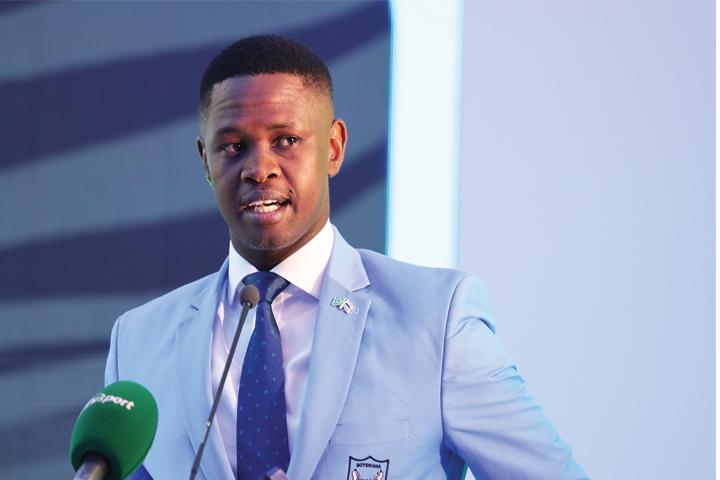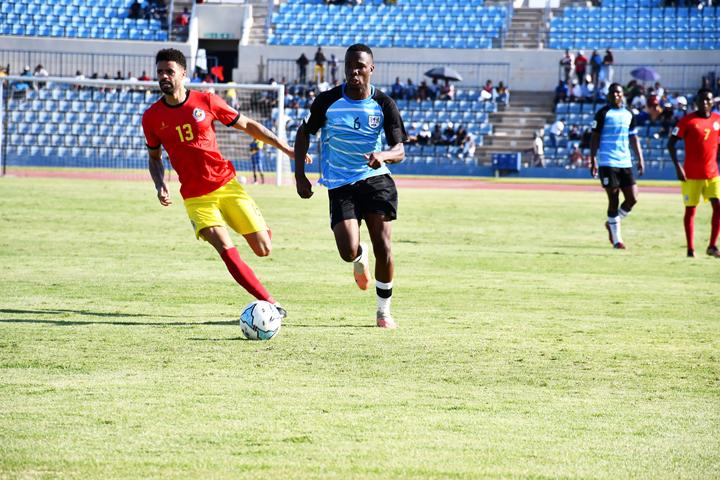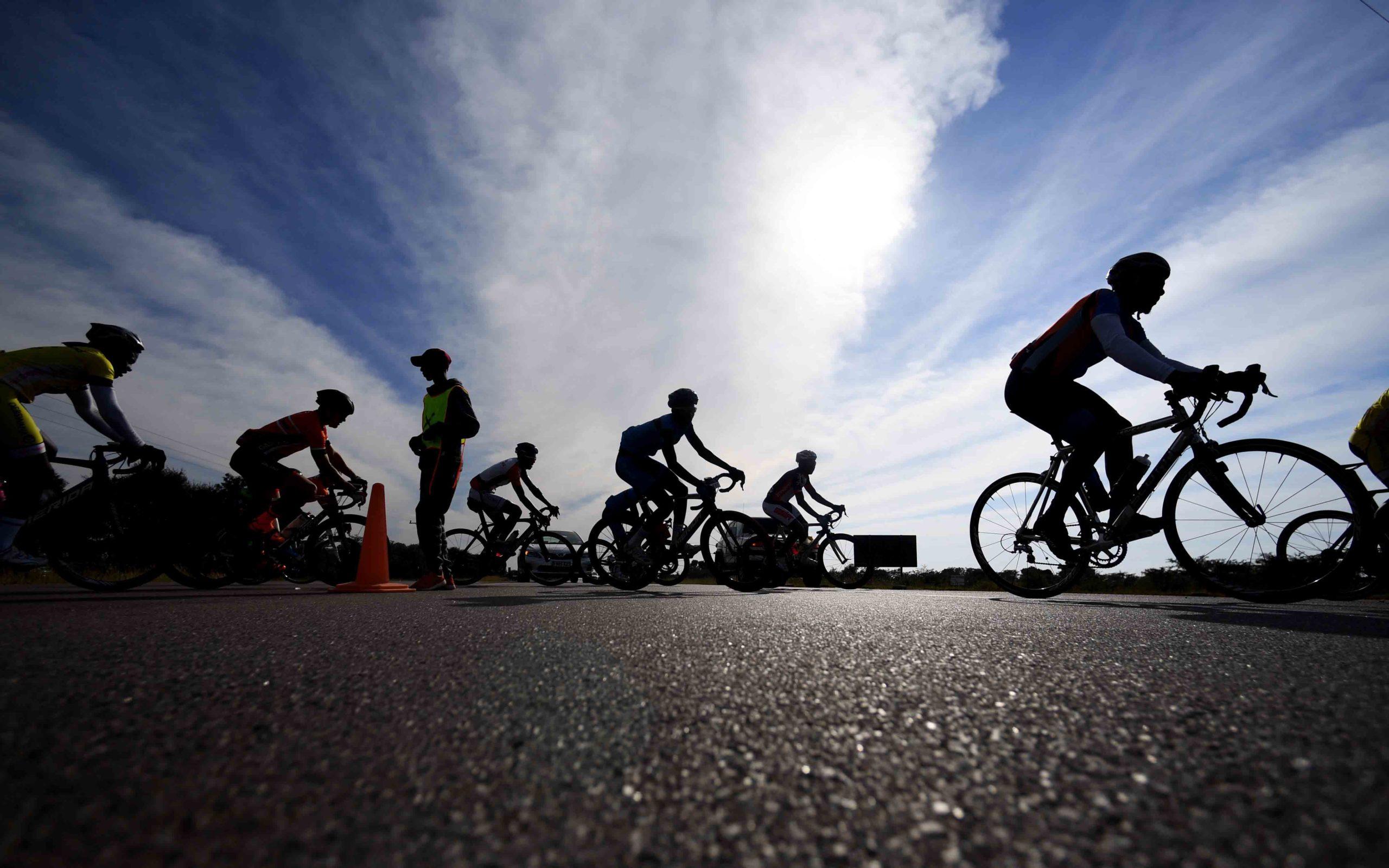IAAF moves to end South African Semenya’s reign
South African track star, Caster Semenya’s controversial reign of middle distance running may be cut short following the issue of new Eligibility Regulations for Female Classification by world governing body, International Association of Athletics Federations (IAAF).
On Thursday, the IAAF published a statement on their website spelling out regulations for athletes who cover events from 400m to the mile, including 400m, hurdles races, 800m, 1500m, one mile races and combined events over the same distances (‘Restricted Events’). The IAAF announced a separate classification for athletes of Difference of Sexual Development (DSD) which will require those athletes to reduce their blood testosterone levels and maintain those levels if they want to compete internationally.
The new Regulations, approved by the IAAF Council in March, will come into effect from 1 November 2018 and replace the previous Regulations Governing Eligibility of Females with Hyperandrogenism. This comes on the back of a decade-long debate over the controversy sparked by Semenya, who is the most famous athlete suffering from Hyperandrogenism, also known as androgen excess. Hyperandrogenism is a medical condition characterized by excessive levels of androgens (male sex hormones such as testosterone) in the female body and the associated effects of the elevated androgen levels.
The new rules effectively mean that Semenya’s long and controversial reign as the queen of middle distance will come to an end, unless she takes medication to lower the androgens in her body. Semenya, double Olympic and triple world champion over 800m who completed the 800-1500 double at the Commonwealth Games this month, has always been a controversial figure in the sport as its authorities have sought a solution that respected her rights while also providing a “level playing field”.
Ever since she won the 800m title as an 18 year old in 2009, Semenya’s career has been dogged by controversies to do with her being hyperandrogenous. Some of her rivals have in fact had her rivals complaining that they faced an impossible and unfair challenge in her.
The IAAF Council announced last month that following a review of available evidence it would revise its regulations, with the changes coming into force on Nov. 1.
According to the new rules DSD athletes will have to reduce their blood testosterone level to below 5nmol/L for a continuous period of at least six months and must maintain those levels continuously for the rest of their athletic career. Female athletes who want to take part in international events but do not lower their testosterone levels will be allowed to compete against men.
South African Sports minister Tokozile Xasa has since labelled the new IAAF rules as ‘Caster Semenya regulations’. In a strong worded statement released following the official announcement by the IAAF, Xasa said her government would continue to engage with relevant bodies and utilise all available avenues to ensure that Semenya and other athletes likely to be affected by the regulations are allowed to participate unhindered by measures intended to reduce their competitive edge.
In the statement, IAAF president Sebastian Coe is quoted as saying: “As the International Federation for our sport we have a responsibility to ensure a level playing field for athletes. Like many other sports we choose to have two classifications for our competition – men’s events and women’s events. This means we need to be clear about the competition criteria for these two categories.
Our evidence and data show that testosterone, either naturally produced or artificially inserted into the body, provides significant performance advantages in female athletes. The revised rules are not about cheating, no athlete with a DSD has cheated, they are about levelling the playing field to ensure fair and meaningful competition in the sport of athletics where success is determined by talent, dedication and hard work rather than other contributing factors.”
“The latest research we have undertaken, and data we have compiled, show that there is a performance advantage in female athletes with DSD over the track distances covered by this rule,” Dr Stephane Bermon from the IAAF Medical and Science Department is also quoted as saying on the IAAF site.
The New Regulations
The new Regulations require any athlete who has a Difference of Sexual Development (DSD) that means her levels of circulating testosterone (in serum) are five (5) nmol/L or above and who is androgen-sensitive to meet the following criteria to be eligible to compete in Restricted Events in an International Competition (or set a World Record in a Restricted Event at competition that is not an International Competition):
(a) she must be recognised at law either as female or as intersex (or equivalent
b) she must reduce her blood testosterone level to below five (5) nmol/L for a continuous period of at least six months (e.g., by use of hormonal contraceptives);
and (c) thereafter she must maintain her blood testosterone level below five (5) nmol/L continuously (ie: whether she is in competition or out of competition) for so long as she wishes to remain eligible.
Sport
Gloves off as Minister Rakgare blasts Zakhem, Jagdish

Minister Tumiso Rakgare, the Youth, Gender, Sport, and Culture Minister, has declared war on Botswana Football League (BFL) Chairman Nicolas Zakhem and league treasurer Jagdish Shah, accusing them of disrupting the local football scene. He proclaimed, “We must confront these individuals who are wreaking havoc on football.” He further stated that the local football governing body is seemingly shielding these individuals.
In December 2023, the Botswana Premier League found itself embroiled in a controversy that sparked outrage among the clubs. This controversy was ignited by the league board’s autocratic decision to reduce the number of teams from 16 to 12 for the 2023/2024 season. The clubs were so incensed that they threatened to boycott league games.
Zakhem and Shah, in response to the shareholders’ move, took BFL shareholders to court, challenging their removal from the BFL board.
At the launch of Ashford Mamelodi’s book, ‘PROTECTING THE GAME’, Rakgare expressed his views, stating, “When we say protecting the game, we must indeed protect it. We must confront those who have disrupted our football by taking football matters to court ‘head on’, if we fail to do this, we are doing injustice to our football.”
He further lamented, “I am losing faith in the leadership of local football and I am saying this without fear or favour because we have individuals who seem to be protected by our local football governing body. Those people recently dragged football matters to court but are still recognized as football leaders. How can this be possible?”
Rakgare also pointed out that there are people who have been relentless in their pursuit of some of the clubs, even to the point of stripping them of their resources. This has left players relying on club equipment to play football and support their families struggling to meet their obligations.
“They have dreams of playing abroad to earn more money, but issues like these set them back. We have individuals like Tumisang Orebonye who are currently raising the country’s flag high and we have individuals such as Maano Ditshupo who have used their football skills to build a clinic in their home village. Imagine such a person being denied the opportunity to play football,” he noted.
Rakgare, expressing his determination, stated, “I am saying this with an open mind, I know some of them in the past threatened to support my political opponents at Mogoditshane, I don’t care, I will take them head on because I am ready as it is about Botswana,” he emphasized.
Zakhem, in response to Rakgare’s ‘persistent interference’ in football matters, pointed out that it poses a significant obstacle to the advancement of local football. He disclosed an instance where Rakgare publicly aired views on football matters on national television, insinuating that foreigners were dominating local football.
“He said live on national television that foreigners are the ones running local football, he was talking about me and Jagdish Shah. How can you go live on TV and say that? I am sorry to say that we are citizens of this country,” Zakhem retorted.
On the other hand, Rakgare noted that he has lost count of the number of esteemed sport administrators, politicians, and other leaders who, at the end of their careers, have threatened to author and publish books but have yet to follow through.
“In my world, Mr. Mamelodi, you join a very prestigious league of Batswana men and women such as the late former President Sir Quett Ketumile Masire (may his good soul rest in peace), Mr David Magang and Dr. Margaret Nasha, who through their books have ensured that many future generations of Batswana can benefit from their experiences and wisdom,” Rakgare concluded.
According to Rakgare, Bra Ash has spent more years in football administration than he has lived on planet earth. “Throughout his four decades of football administration, Bro Ash has worked with tens, if not hundreds of leaders that not only shaped football in Botswana, the region and the continent, but some whom have gone on to hold very important positions such as those of political leaders. In addition, I am talking of the likes of legislators Ray Matlapeng Molomo (may his soul rest in peace) and Philip Makgalemele; both from Botswana as well as Bomber Mthethwa from Eswatini, to name but a few,” he praised.
Sport
Zebras’ goal drought cause for concern

The Zebras have found themselves in a goal-scoring rut, drawing blanks in their recent international friendly tournament against Burundi and Rwanda in Madagascar. This lacklustre performance has raised concerns about the team’s readiness for the impending 2026 World Cup Qualifiers.
In the world of football, the number of goals a team scores often dictates the game’s outcome. The ability to successfully navigate the opposing team’s defence and find the back of the net significantly boosts a team’s chances of victory.
However, the Zebras’ upcoming matches against Uganda and Somalia in June promise to be pivotal for their World Cup qualification bid. Therefore, it’s crucial for the team to start scoring if they aim to advance.
The Zebras’ head coach, Didier Da Rosa, has already demonstrated his mettle in his tenure, despite a rocky start. His first assignment was a 3-2 loss to Mozambique in the 2026 World Cup Qualifiers opener in November 2023. Despite the defeat, Da Rosa saw potential in the team’s performance.
A week later, the Zebras bounced back with a commendable 1-0 victory over continental powerhouse, Guinea. This win at Obed Chilume Stadium signalled the Zebras’ readiness to compete at an international level.
With the World Cup qualifiers looming, observers believe Da Rosa needs to step up the team’s preparations. The upcoming matches against Somalia and Uganda are expected to be intense, and the Zebras cannot afford to be complacent.
The Zebras’ captain, Thatayaone Ditlhokwe, is currently recovering from a shoulder injury, which could be a significant setback. However, his return to the team could provide a much-needed morale boost.
In addition, the inclusion of midfielder Brandon Wilson could be a game-changer, provided his citizenship documentation is finalised in time. Da Rosa has praised Wilson’s skills, stating, “Wilson’s mastery of the field, his spatial awareness, and ball reception mark him as a midfield marvel. His strategic positioning is a lesson in discipline, a skill set our team can greatly benefit from.”
Upon his return from Madagascar, Da Rosa expressed his satisfaction with the team’s performance, stating, “We picked up a lot of positives from the tournament. We managed to evaluate a few individuals. It was a very tactical tournament, we didn’t concede any goal but we didn’t score any goal, which is a worrying factor. I need to find solutions in that department as it is the most key aspect of the game as goals win you matches.”
Da Rosa also acknowledged the physicality of the matches, particularly the encounter with Rwanda. “I am positive about how we played but I feel we still need to play more matches so that we get up to the standard. We are anticipating the return of Ditlhokwe, Gape Mohutsiwa and Mpho Kgaswane who could play a vital role in our quest to cause an upset when we face Uganda and Somalia in June,” he said.
The Zebras’ 2026 World Cup Qualifiers Group is a tough one, with formidable opponents like Algeria, Somalia, Guinea, and Uganda. These teams are packed with players based in Europe, and each player will need to bring their best performance to secure a place in these crucial matches.
The Zebras’ journey to the World Cup will be a challenging one, but with the right preparation and mindset, they have the potential to make their mark on the international stage.
Sport
Cycling for the TKC starts 15 April 2024

Preparations for the ‘Cycling for the TKC event’ are at advanced stages as 30 cyclists from Botswana, Namibia and South Africa prepare themselves to endure the 1900km ride from Pretoria to the Walvis Bay via Lobatse in Botswana. The cycling challenge will start on April 15 to April 28, 2024. As one of the activities identified to commemorate 20 years since the Trans Kalahari Corridor (TKC) member states signed an agreement to coordinate and manage TKC, the cycling event is expected to bring awareness of the corridor thereby marketing the corridor within the member states and beyond. The event will be conducted under the theme ‘Transforming the TKC into an economic corridor.’ Commenting on the theme,
The Executive Director of the Trans Corridor Secretariat Mr. Leslie Mlungisi Mpofu stated that the corridor transverses through some of the low-income communities and therefore the corridor is expected to inject economic impetus on these communities thereby creating much needed jobs, be it informal or formal employment. The objectives of the event are to promote spatial development initiatives on the Trans Kalahari Corridor and to create an increased awareness and usage of the TKC for both trade and tourism thereby increasing the volumes on the TKC. ‘ It is important to promote sustainable tourism and events like this are key in promoting tourism, economic growth, the environment as well as conservation. By showcasing the scenic beauty and cultural richness of the corridor, the event will foster deeper appreciation of the unique regions the corridor passes through’. Said Mr. Mpofu. Other objectives of the event include obtaining Member State commitment to the economic development through spatial development initiatives along the TKC, to promote road safety on the TKC in line with the UN Second Decade of Action for Road Safety as well as the African Union Road Safety Charter as well as to create a hype for the commemoration of the 20 years anniversary.
A Pledge to be signed by the ministers responsible for transport on behalf of their citizens to promote spatial development iniatitves, and committing to the development of the TKC will be handed over to the ministers for signature by the cyclists at Pretoria, Lobatse and Walvis Bay respectively. The cyclists will stop at several towns and villages along the corridor to engage with the community. Safety measures and protocols will be implemented to ensure the well-being and safety of all participants and these will include but not limited to police escort, medical support, route supervision and support. Measures have also been taken to ensure that the ride is memorable and enjoyable to all participants. Cycling clubs along the corridors members of the public who are interested are also encouraged to cycles with the key riders either to meet them before they arrive in settlement / town or to ride with them as the leave a settlement/town for a distance they so wish. Organizations, companies and public entities are also invited to participate through sponsorships.
The Trans Kalahari Corridor Secretariat (TKCS) is a secretariat of the Trans Kalahari Corridor Management Committee (TKCMC), a corridor management institution (CMI) that was established through a Memorandum of Understanding (MoU) signed between Namibia, Botswana and South Africa. The TKCS coordinates the implementation of the TKCMC trade and transport facilitation work programme. The CMI also is mandated to promote the Trans Kalahari Corridor which stretches about 1900 km from Gauteng, South Africa, across Botswana and ends at the Walvis Bay, Namibia.

